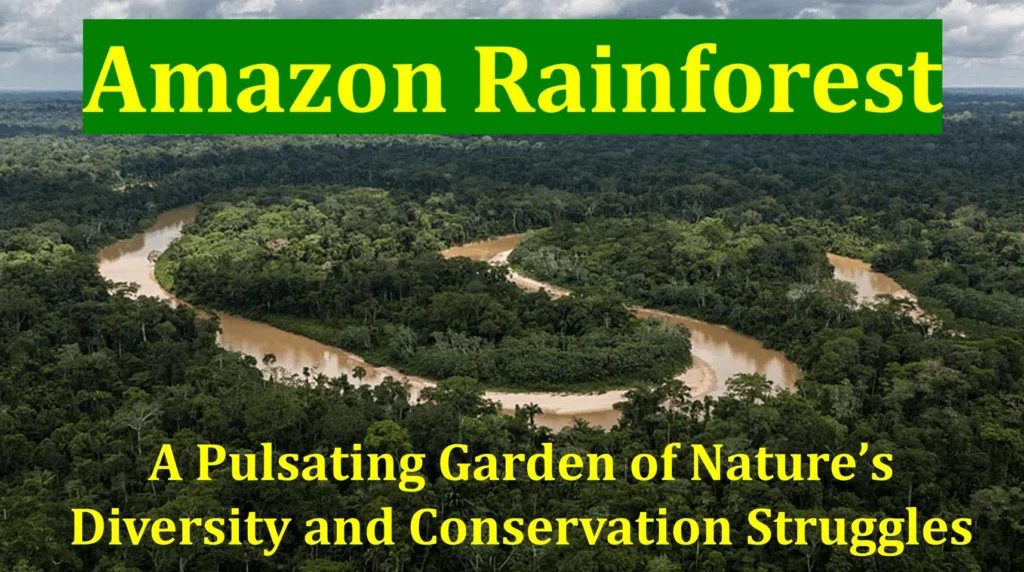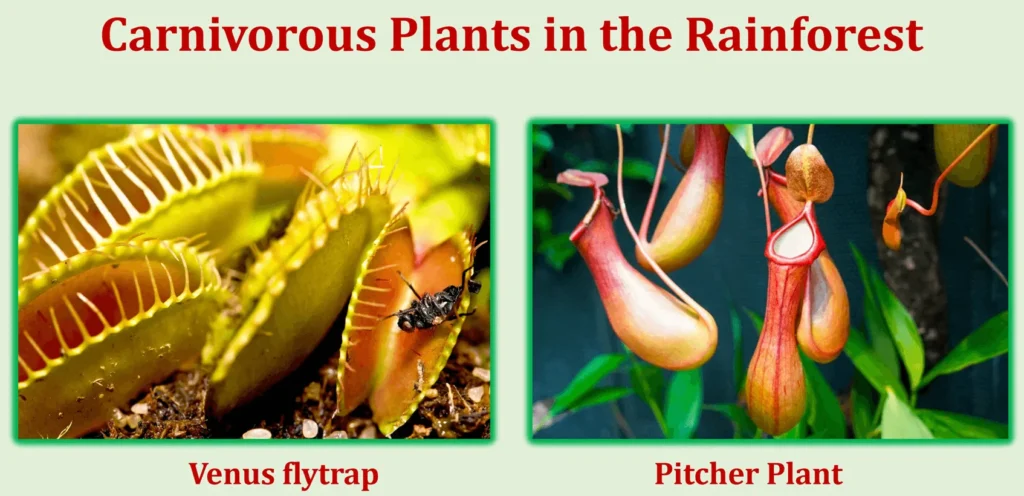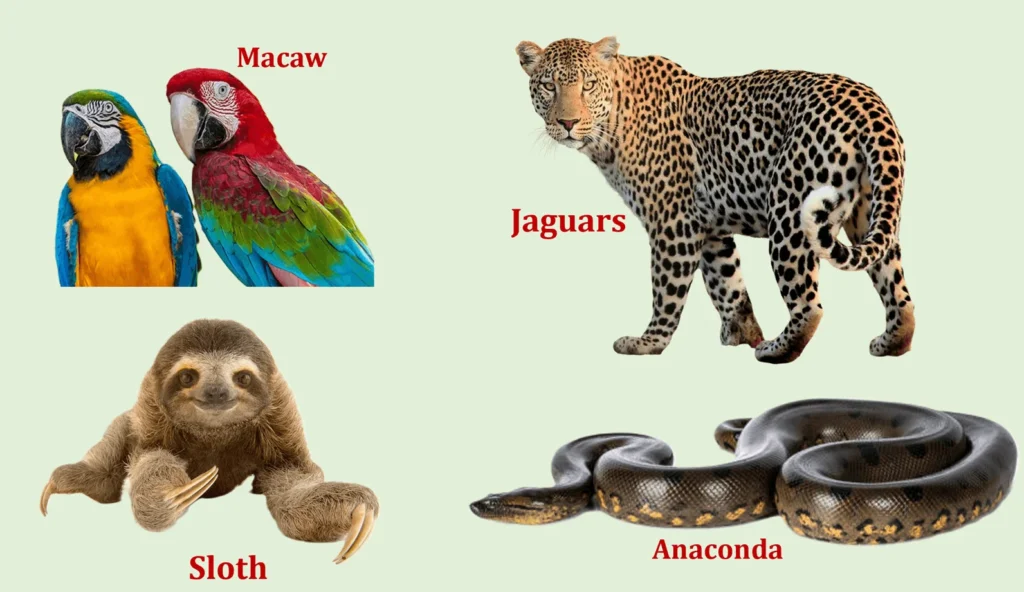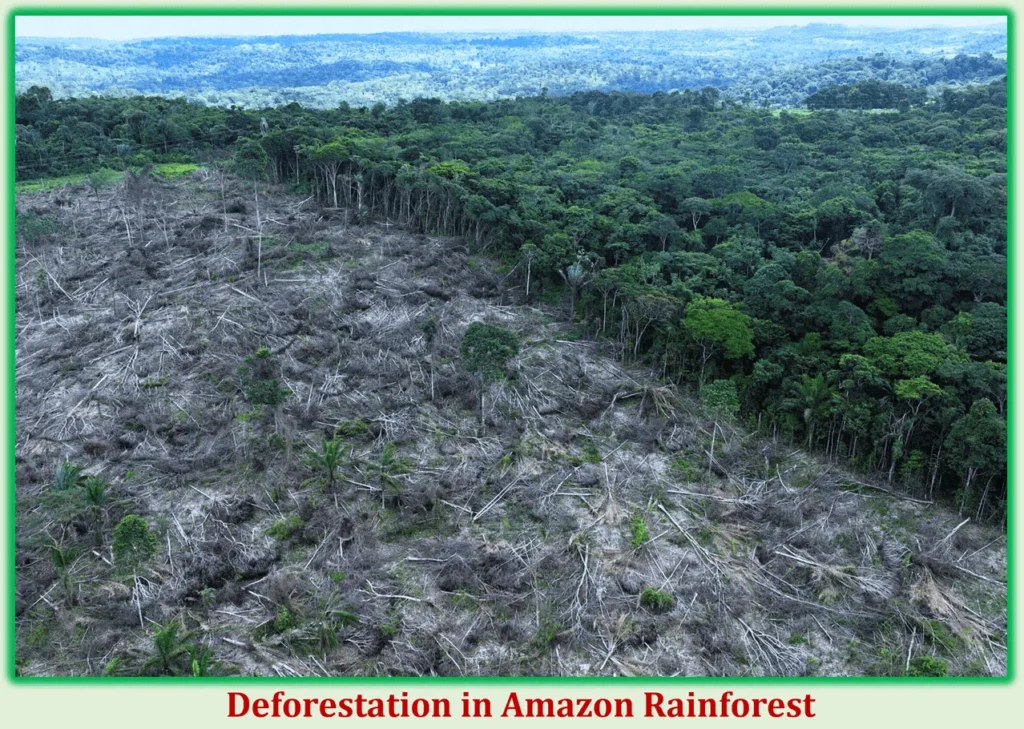
Introduction
The Amazon rainforest is a remarkable world of living things that covers 6.7m sq km across nine South American countries. It is a region described as the earth’s “lungs” because of its ability to produce oxygen and regulate climate. This blog post will investigate the amazing diversity of life in the Amazon Rainforest, its importance for the planet, and some urgent issues concerning conservation.
An Overview of the Amazon Rainforest
The Amazon is the foremost of all tropical rainforests in the world, and it accounts for about 40% of South America. This forest has countless numbers of animals and plant species that cannot be found elsewhere on Earth. The hot temperatures, high rainfall, and plenty of sunshine have all combined to make this an ideal setting for a wide range of organisms leading to great variety in such a region.

Significance of the Amazon Rainforest for the Planet
In saving our world, it is important to understand that Amazon Rainforest has a very significant role. The large number of trees in its expanse are essential, as they are perfect carbon sinks that inhale, and store huge amounts of greenhouse gas called carbon dioxide. Moreover, this rainforest contributes lots of oxygen to the earth’s atmosphere essential in maintaining oxygen levels.
Threats to the Amazon Rainforest
The Amazon Rainforest is under different kinds of threats whose incidence greatly puts its survival at stake despite its great importance in ecology. The largest challenge is deforestation caused by expansion of agriculture, road construction and logging among others. This kind of destruction often reduces the rainforest’s ability to regulate the weather but also causes loss of species and their habitats permanently. Additionally, there is climate change as well illegal trade in wildlife and mining making it difficult to conserve the Amazon Rainforest.
Amazon Rainforest’s Ecosystems and Wildlife
Introduction to Amazon Rainforest’s Ecosystems
There are three layers that divide an organization in the rainforests. These include, from highest to lowest, canopy layer, understory layer and forest floor layer. Each of these layers supports different species and contributes to the smooth operation of the forest in general.
The Emergent Layer
The highest level of forest in the Amazon rainforest is the emergent layer, which is characterized by tall trees rising above the canopy to 200 feet and more. These aloft trees include Brazil nut and kapok trees, which break the thickly dense canopy to get sunlight and water. This forms a unique environment containing different species of birds, insects as well as some monkeys. In terms of weather regulation and protection of other organisms living beneath them, these towering vegetations are adapted to withstand strong winds and intense sunlight in order to effectively manage, modulate and control its microclimate conditions. Despite its difficulties, this stratum continues to flourish as a symbol of diversity within the Amazon Forest ecosystem.
The Canopy Layer
The canopy is characterized by the tree crowns of height 95 feet and below 200 feet and provides habitat for numerous plants and animals as well as insects. Primates, birds, and reptiles are some of the creatures that benefit from food, shelter, and protection against predators offered by it.

The Understory
The understory is situated underneath the canopy consisting of smaller trees of height below 55 feet but above the forest layer. In this layer there are many kinds of insects, amphibians, reptiles which all create a complex weave of life within the rainforest.
The Forest Floor
Life is bustling on the forest floor composed predominately of decomposing organic matter along with low- lying vegetation such as grasses or ferns. This level houses insects, rodents as well as larger mammals including tapirs and peccaries which are critical in promoting nutrient cycling necessary for healthy ecosystems in this rainforest area.
Distinctive Flora Types in the Amazon Rainforest
Countless species, yet to be known, are found in the Amazon Rainforest, which has an overwhelming variety of flora. Some of these treasures are endangered plants, carnivorous botanicals and medicinal herbs.
Plants of Tropical Rainforest and Their Ethnomedicinal Properties
It is stated that Amazon forest has a variety of species of plants which are thousands years old and which have been used by the aborigines as medicines for some time now. The digestive problems are the significance of these plants, notably skin infections.
Carnivorous Plants in the Rainforest
Other types of carnivorous plants also exist in the rainforests, for example Venus flytrap and pitcher plants among others. These organisms consume insects while adapting to low nutrient soils in the process representing different life tactics across forest ecology.

Endangered and Rare Plant Species
Unfortunately, many plant species in the Amazon forests face extinction due to human activities. The fragile support that these special plants enjoy is being undermined by rampant deforestation thereby making it vital to undertake conservation efforts before it is too late.
Different Fauna of the Amazon Rainforest
Undiscovered Species in the Amazon
The Amazon Rainforest is home to a number of animals including those that are famous and unknown. Sloths, anacondas, macaws and jaguars are among the well-known wildlife in this forest that have captivated the interest of individuals globally. These incredible creatures act as symbols of Amazon’s immense diversity and are vital for the rainforest ecosystem.

Endangered species from the forest
Regrettably, many animals’ species that live in amazon rainforest face extinction danger. The destruction of their natural environments coupled with illegal trade wildlife poses serious risks to such animals like Amazon river dolphin, giant river otter as well as harpy eagle.
Uninvestigated Finds of Nature
According to researchers there are numerous new organisms being discovered day by day despite advances made in research on The Amazon Rainforest.The vastness even means that countless undiscovered creatures may still be hidden within its depths as estimated by scientists. Such an observation shows that it is important for these mysterious ecosystems to be explored upon and preserved all along.
“The Amazon Rainforest is not just a biological wonder, but a lifeline for our planet. The time to protect and cherish this natural treasure is now.”
Indigenous Communities and Traditional Knowledge
Indigenous Communities in the Amazon Rainforest
Cultural Diversity and Heritage
The Amazon Rainforest hosts myriad indigenous groups, each with its unique culture and heritage. Among them are Yanomami, Kayapo and Ashaninka who have lived in the forest for centuries together hence their combined wisdom has helped protect biodiversity.
Sustainable Lifestyles and Traditional Practices
The indigenous people of the Amazon Rainforest lead sustainable lives that are closely tied to nature. Traditional practices are used by them to secure food, cure diseases, have protection among many other necessities they can get from the forest without polluting it too much. For example, Yanomami practice shifting cultivation which leads to re-growth of the forest and enhances biodiversity conservation.
Relationship Between Indigenous Peoples and the Rainforest
The indigenous people of the Amazon Rainforest regard their selves as part of this ecosystem itself. Their strong spiritual connection to their land provides a firm understanding of biodiversity in terms of the flora and fauna. This interconnectedness makes them conserve rainforests because they know that human activities have to be in harmony with nature.
Indigenous Knowledge and Contributions to Conservation
Traditional Ecological Knowledge (TEK)
This knowledge is vital for conservation, as it indicates how resources can be utilized sustainability by Native populations in the area. It includes such issues as forests’ connectivity with plant taxonomy, medicinal benefits and ecological linkages that are transmitted through generations.
Sustainable Resource Management by Indigenous Peoples
Indigenous communities in Amazon have managed resources sustainably over uncountable generations. They exploit resources in ways that will keep them in existence for future inhabitants because they fully apprehend their surroundings. Their actions curtail environmental destruction through selective logging among others.
Problems facing indigenous communities
Though their massive contributions to conservation, Native people in the Amazon Rainforest have numerous challenges. Shrinking their ancestral lands, illegal logging and mining have endangered their way of life and imbalance in the rain forest. This is worsened by lack of adequate education as well as health care systems for them making them even more vulnerable. Their rights must be protected, and they should be empowered to face these challenges.
“The Amazon Rainforest and its indigenous communities are interdependent actors in a delicate drama about preservation which we hope to pass on to our descendants with the help of their commitment and wisdom.”
Environmental Challenges and Conservation Efforts
Deforestation: The Greatest Threat to the Amazon
Today, there are harsh environmental problems that face the Amazon Rainforest among them is deforestation being the most dreadful. When trees are cleared for various reasons like agriculture, logging, or urbanization this is called deforestation. To handle it effectively it will help if we get to know causes of deforestation and its environmental effects.

What drives deforestation?
In Amazon, economic factors such as agricultural land demand, timber and minerals among others drive deforestation more than any other factor. This has been driven by expansion in cattle ranching, soybean production and palm oil production. Also, construction of roads and dams has caused trees to be removed since they provide access into new areas.
Environmental implications of deforestation
Deforestation has grave implications on the Amazon Rainforest with its unique biodiversity. Clearing trees destroy habitats displacing species leading to their extinction. Furthermore, cutting down forests also brings changes in climate where deforestation leads to interruption on rainfall patterns hence carbon dioxide emission into atmosphere coupled with depletion of water resources balance.
Role of Agriculture and Logging in Deforestation
Cattle ranching and soybean farming, including otherwise, are important for deforestation of the Amazon. The demand for beef as well as animal feeds has led to extensive land clearing that is mostly not sustainable and done through fire-starting methods. Additionally, logging of valuable timber species worsens deforestation thus causing permanent damage to the forest ecosystem.
International Conservation Initiatives
In recognition of the importance of the Amazon Rainforest, international conservation initiatives have been created to safeguard this priceless ecosystem. These initiatives include both protected areas and partnerships between global organizations.
Protected Areas and National Parks in the Amazon
The Amazon rainforest has established protected areas and national parks so as to preserve its biodiversity. These are vital habitats for endangered species and important for conserving key sites within the forest. Examples include Yasuni National Park in Ecuador and Mamirauá Sustainable Development Reserve in Brazil.
International Organizations and Collaborations
Different international organizations are working together against deforestation in order to promote sustainable development within Amazon region. One of such prominent organizations is Amazon Environmental Research Institute (IPAM) which engages in scientific research, promotes sustainable land use practices and advocates for effective conservation policies. Partnership between governments, NGOs and indigenous communities is vital in these undertakings.
Sustainable Development Projects in Amazon Rainforest
These initiatives are established so as to meet the financial requirements of people and at the same time save their natural environment. In this regard, these undertakings are geared towards strengthening the local community by offering them other means of raising money without logging. Examples may be eco-tourism initiatives, agricultural programs that are environmentally friendly or non-timber forest products promotion done by such projects.
Local and Community-Based Conservation Efforts
Though international conservation initiatives play a vital role, local and community-based efforts are equally critical for the Amazon Rainforest’s long-term preservation. For instance grassroots organizations and empowering indigenous communities have taken up the mantle of conservation.
Grassroots Organizations and Activism
A number of grassroots organizations have risen to conserve the Amazon Rainforest. On the ground, these organizations create awareness, lobby for policy changes as well as engage local communities in conservation activities. This therefore underlines the importance of people coming together to make an impact.
Empowering Indigenous Communities in Conservation
The Amazon’s indigenous peoples have a strong bond with this forest and possess invaluable traditional knowledge about sustainability. For this reason, it is important to empower them in conservation work. In this regard their rights need to be recognized, and they should be encouraged, for example through community based forestry management, which not only helps preserve their ways of life but also adds up to global Amazon conservation efforts.
Sustainable Economic Alternatives
This is why it is critical to create sustainable economic alternatives that will help reduce the dependence of local communities on deforestation-inducing practices. In addition, agroforestry which entails planting crops together with trees would promote both environmental and economic sustainability. The local people can only benefit when they choose these kinds of alternatives as they give them an opportunity to prosper without destroying the forest.
Conclusion & FAQs
The most critical threat to Amazon rainforest is deforestation. To fight deforestation, international conservation programs such as protected areas, partnerships, sustainable use projects are indispensable. However, participation of local communities and grassroots organizations in conservation is also vital. We can save this unique environment by supporting grassroots activism, empowering indigenous communities and promoting sustainable economic alternatives.
“In the end we’ll only preserve what we love we’ll plainly love what we understand; and we will comprehend exactly what is imparted to us.”
– Baba Dioum
Frequently Asked Questions (FAQs)
Why is the Amazon Rainforest called “Lungs of the Earth”?
The Amazon Rainforest is still called the “Lungs of the Earth” because it releases about 20% of the world’s oxygen. It contains a lot of vegetation that acts as a carbon sink where plants absorb carbon dioxide and release oxygen during photosynthesis.
What is Deforestation and the indigenous community in Amazon?
This destruction directly impacts the indigenous communities found within Amazon since it involves destroying their ancestral homes, breaking their culture and traditional ways of living. Their lives are tied to that forest; hence, they end up in poverty, being dispersed and losing their identity.
How can individuals support conservation efforts in relation to the Amazon Rainforest?
To promote conservation of the Amazon Rainforest, people should make eco-friendly decisions in their day-to-day activities. Such actions include cutting down on products that lead to deforestation while encouraging certified sustainable commodities, advocating for responsible forest management and donating money to trustworthy organizations involved with saving rainforests. Remember, the Amazon Rainforest is not just an epitome of biodiversity, but also a critical part of our collective responsibility to protect and conserve nature’s wonders. Every step, big or small, towards its preservation is a significant contribution to the well-being of our planet.
